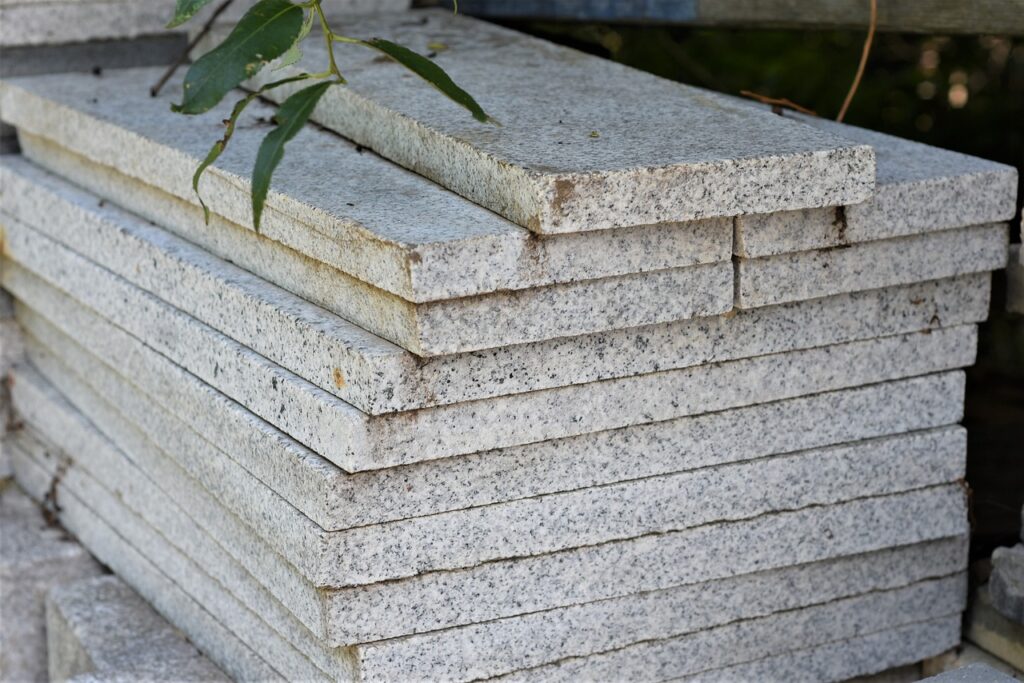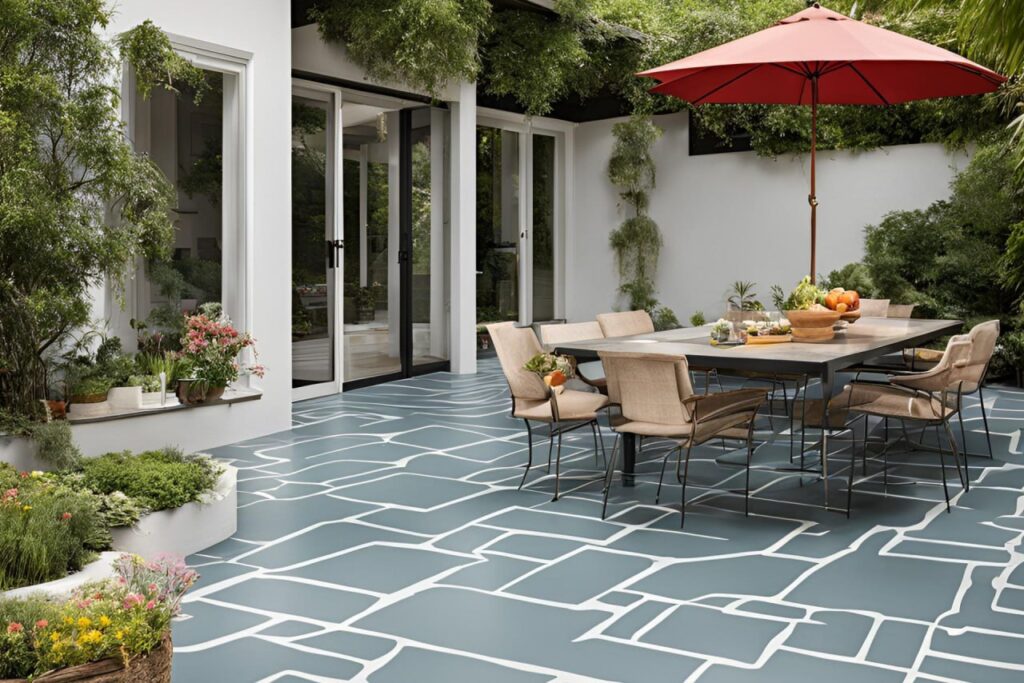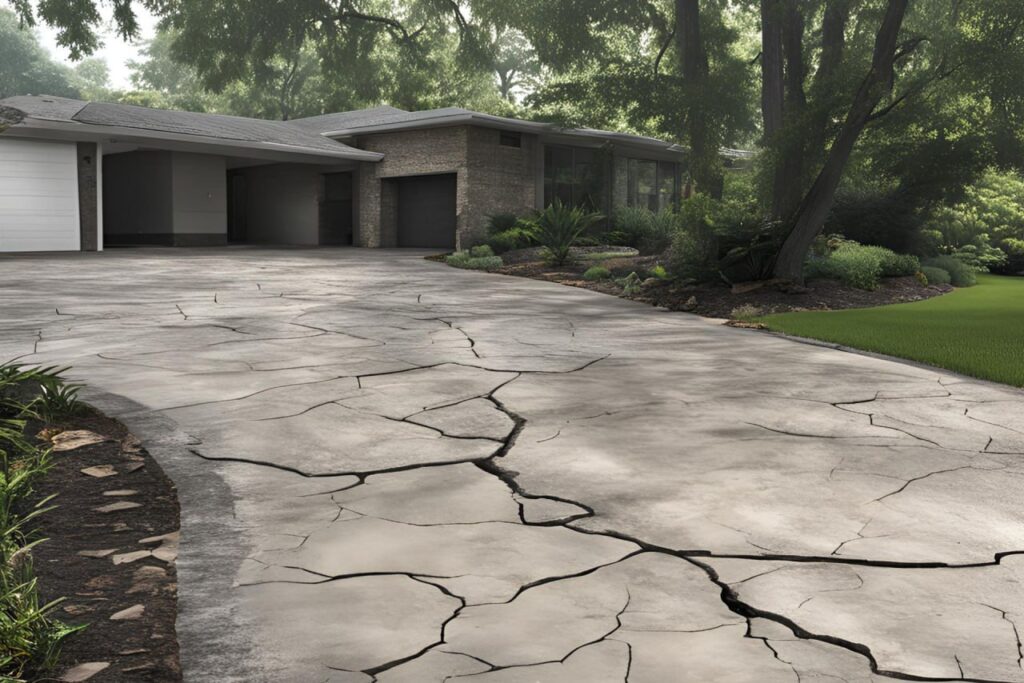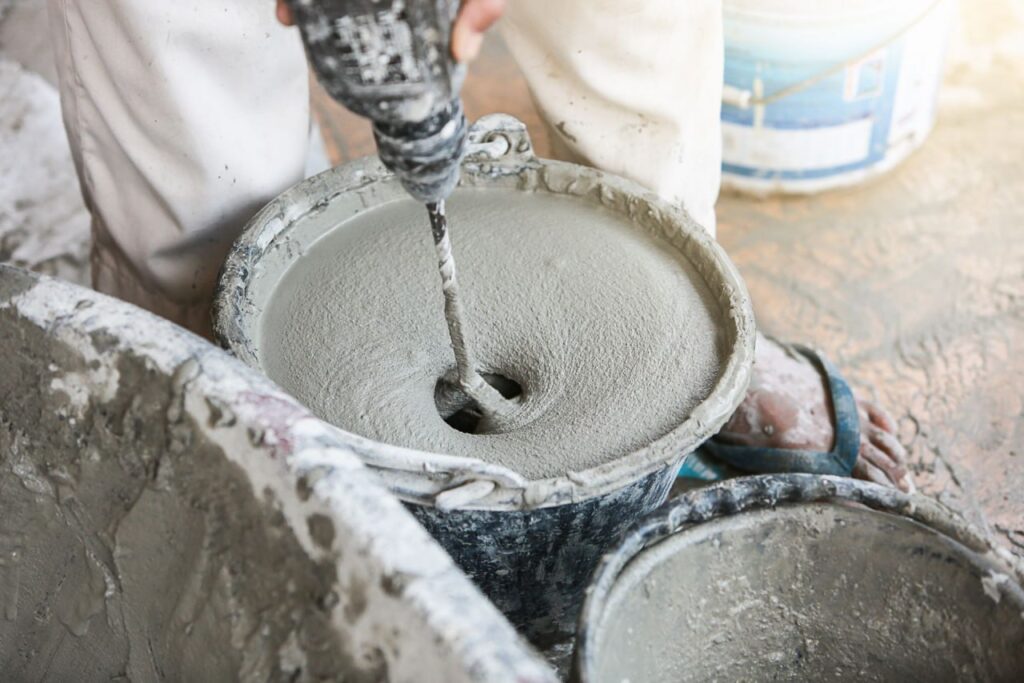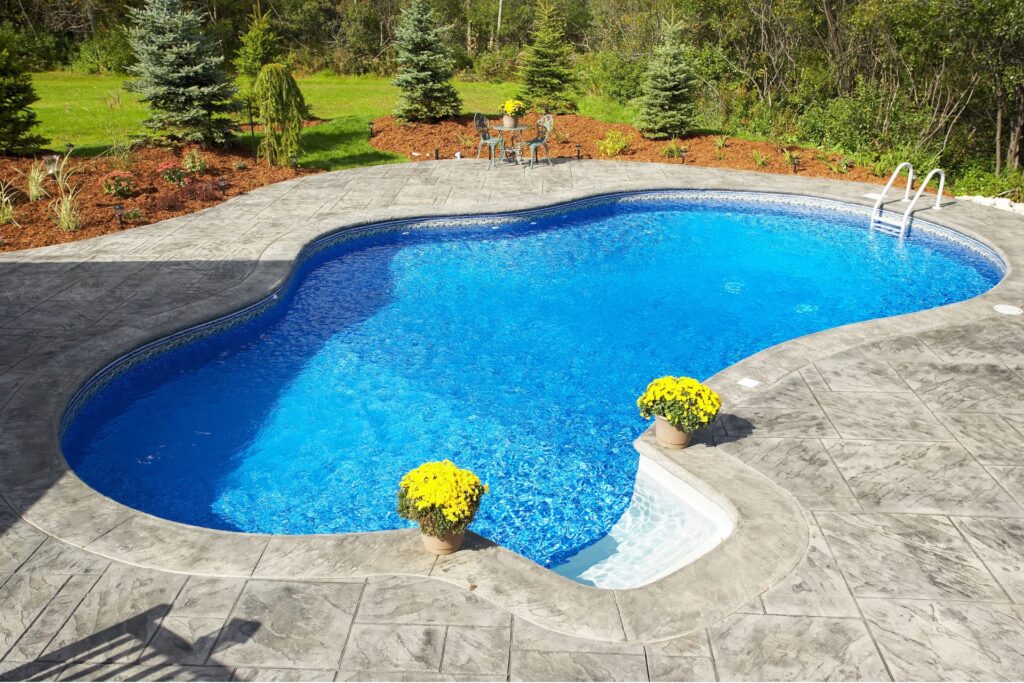Welcome to our comprehensive guide on the pros and cons of a concrete slab foundation. If you’re considering building a new home or making foundational changes, understanding the benefits and drawbacks of different foundation types is crucial. In this post, we’ll delve into what makes concrete slab foundations a popular choice, as well as the potential challenges they present. By the end, you’ll have a clear picture of whether this type of foundation is the right fit for your needs, helping you make an informed decision for your construction project.
A concrete slab foundation offers several benefits, including durability, cost-effectiveness, and resistance to pests. It provides a strong base, is quick to install, and can contribute to energy efficiency. However, there are also drawbacks, such as difficulty in accessing plumbing and electrical systems, potential for cracking, and susceptibility to moisture issues. Additionally, concrete can be cold and hard underfoot, potentially requiring additional flooring materials for comfort. Understanding these pros and cons can help you determine if a concrete slab foundation is the right choice for your building project.
- What Is A Concrete Slab Foundation
- The Pros Of A Concrete Slab Foundation
- The Cons Of A Concrete Slab Foundation
- Comparing Concrete Slabs To Other Foundations
- Factors To Consider Before Choosing A Concrete Slab Foundation
- Real-Life Examples And Case Studies
- Expert Opinions And Quotes
- FAQs: About What Are The Pros And Cons Of A Concrete Slab Foundation
- Conclusion
- Find A Professional Concrete Company Near You!
What Is A Concrete Slab Foundation
Definition
A concrete slab foundation is a large, flat surface of concrete that serves as a building’s base. This type of foundation is a popular choice for residential and commercial structures due to its durability and cost-effectiveness. It provides a stable, level surface that supports the weight of the building above and distributes it evenly across the ground.
Construction Process
The construction of a concrete slab foundation involves several key steps:
1. Site Preparation: The site is first cleared of any vegetation, debris, and topsoil. The ground is then leveled and compacted to create a stable base.
2. Formwork Installation: Wooden or metal forms are set up around the perimeter of the intended slab area to contain the concrete when it’s poured.
3. Base Layer: A layer of gravel or crushed stone is spread over the compacted ground. This base layer helps with drainage and provides additional stability.
4. Vapor Barrier: A plastic sheet is laid over the base layer to prevent moisture from the ground from seeping into the concrete.
5. Reinforcement: Steel rebar or wire mesh is placed within the forms to reinforce the concrete, enhancing its strength and preventing cracks.
6. Pouring Concrete: Concrete is mixed and poured into the forms, then spread evenly and leveled using tools such as a screed and a bull float.
7. Curing: The concrete is allowed to cure, a process that typically takes several days to a week. During this time, the concrete hardens and gains strength.
8. Finishing Touches: Once cured, the forms are removed, and any necessary finishing touches, such as smoothing the surface or cutting control joints to manage to crack, are completed.
Types of Concrete Slabs
Concrete slab foundations come in various types, each suited to different applications and soil conditions:
- Monolithic Slab: This type involves pouring the entire slab in one continuous operation, including the footing. It is cost-effective and commonly used in areas with stable soil.
- Post-Tensioned Slab: This type includes steel cables (tendons) placed within the concrete and tensioned after the concrete has cured. This method enhances the slab’s strength and resistance to cracking, making it ideal for areas with expansive soil.
- T-Shaped Slab: This traditional method involves constructing a separate footing beneath the slab. The footing is wider than the slab and supports the structure’s weight. This type is suitable for areas prone to frost, as the footing extends below the frost line.
- Raft Slab: Also known as a mat foundation, this type involves a thick slab that covers the entire building area, providing support across a large surface. It’s used for heavy structures and in areas with poor soil conditions.
Understanding the nuances of concrete slab foundations is crucial for making informed decisions about your building project. By choosing the right type of slab and ensuring proper construction techniques, you can achieve a durable and stable foundation that will support your structure for years to come.

The Pros Of A Concrete Slab Foundation
Choosing the right foundation for your home is crucial, and a concrete slab foundation offers several significant advantages. Let’s delve into why this type of foundation might be the ideal choice for your building project.
Durability and Strength
One of the primary reasons homeowners and builders opt for a concrete slab foundation is its durability and strength. Concrete slabs provide a robust base that can support the structure of a house effectively. Unlike other foundation types, concrete slabs are less prone to cracking and settling, which means fewer structural issues over time.
Moreover, concrete is naturally resistant to pests and decay. This is particularly beneficial in areas where termites and other pests can wreak havoc on wooden foundations. Concrete slabs do not provide a food source for these pests, thereby reducing the risk of infestation and the associated damage. This resistance to decay also means that concrete slabs have a longer lifespan compared to other materials, ensuring your foundation remains solid for decades.
Cost-Effective
When it comes to cost, concrete slab foundations are often more economical than other foundation types. The initial installation cost is typically lower because it requires less excavation and fewer materials. Additionally, concrete is a relatively inexpensive material, which helps keep overall costs down.
In the long run, homeowners can also enjoy substantial savings due to the low maintenance requirements of concrete slabs. Unlike wooden or pier foundations, concrete does not rot or deteriorate over time. This means fewer repairs and less frequent maintenance, saving both time and money. The initial investment in a concrete slab foundation can pay off significantly with these long-term savings.
Time-Efficient
Time is often a critical factor in construction projects, and concrete slab foundations can be a time-efficient option. Installing a concrete slab is generally quicker than constructing other types of foundations. The process involves preparing the site, pouring the concrete, and allowing it to cure. This can often be completed in a matter of days, depending on the size and complexity of the project.
This quick installation means that construction can proceed at a faster pace, allowing you to move into your new home sooner. For builders, this efficiency can translate into more projects completed in a shorter timeframe, improving overall productivity and profitability.
Energy Efficiency
Concrete slab foundations can also contribute to the energy efficiency of a home. They provide excellent thermal mass, which helps in maintaining stable indoor temperatures. During the day, concrete absorbs heat from the sun and releases it slowly during the night, keeping the interior of the home warmer in winter and cooler in summer.
This natural insulation can reduce the need for artificial heating and cooling, leading to lower energy bills. Additionally, concrete slabs can be integrated with radiant heating systems, where pipes are embedded in the slab to circulate warm water. This type of heating is highly efficient and provides consistent warmth, further enhancing energy savings.
Lower Risk of Flood Damage
In flood-prone areas, a concrete slab foundation offers a significant advantage. Unlike crawl space or basement foundations, a slab sits directly on the ground and is elevated slightly to prevent water ingress. This design minimizes the risk of flood damage, as there are no underground spaces that can fill with water.
Concrete’s inherent resistance to water also means that it is less likely to suffer from water damage. In the event of a flood, the slab itself will remain intact, preventing costly repairs and potential health hazards associated with water damage, such as mold growth. This makes concrete slabs a safer and more practical choice for homes in areas susceptible to flooding.
In conclusion, a concrete slab foundation provides a durable, cost-effective, time-efficient, and energy-saving solution for homeowners. Its resistance to pests, decay, and flood damage makes it a reliable choice for various building projects. By choosing a concrete slab foundation, you can ensure a solid and long-lasting base for your home, offering peace of mind and financial savings in the long term.

The Cons Of A Concrete Slab Foundation
Lack of Accessibility
One of the primary drawbacks of a concrete slab foundation is the lack of accessibility to plumbing and electrical systems. Unlike raised foundations, where you can easily crawl underneath to reach these systems, a concrete slab locks everything in place. This can become a significant issue if repairs or modifications are needed. Imagine needing to fix a broken pipe or update electrical wiring. Instead of a straightforward process, you might have to cut through the concrete, which is both time-consuming and costly. This can lead to extended downtime for homeowners and higher repair bills, making maintenance a considerable challenge.
Potential for Cracking
Concrete slabs are notorious for their potential to crack. This is often due to the natural settling of the ground or fluctuations in temperature. Over time, even the smallest movement in the earth beneath the slab can cause cracks to appear. These cracks can range from hairline fractures to significant splits that compromise the integrity of the entire foundation. The repair process for these cracks can be quite challenging. Not only do they often require specialized materials and techniques, but they can also be expensive. Depending on the severity of the damage, repairs might involve filling the cracks or, in extreme cases, replacing sections of the slab altogether. This risk of cracking and subsequent repair difficulties can be a considerable disadvantage for homeowners.
Susceptibility to Moisture
Moisture can be a major issue for concrete slab foundations. Without proper sealing and drainage, water can seep through the slab, leading to various problems. Moisture infiltration can cause the slab to weaken over time, promoting the growth of mold and mildew, which can affect indoor air quality and pose health risks. In regions with high groundwater levels or poor drainage systems, this issue can be even more pronounced. Homeowners may need to invest in additional waterproofing measures, such as sealants or drainage systems, to mitigate this risk. These additional measures can add to the overall cost and maintenance of the home.
Comfort Issues
Concrete slabs can also present comfort issues. By nature, concrete is a hard and cold material, which can make walking on it uncomfortable, especially in colder climates. This can lead to a less cozy living environment and might necessitate the installation of additional flooring materials to enhance comfort. Carpets, rugs, or engineered wood floors are often added to mitigate the hardness and coldness of the concrete, providing a warmer and more comfortable surface underfoot. However, these additions can increase the overall cost and maintenance of the home, as they may need to be replaced or repaired over time. Additionally, the thermal properties of concrete mean that it can take longer to warm up a room, potentially leading to higher heating costs in colder seasons.
By considering these cons, homeowners can better weigh the advantages and disadvantages of concrete slab foundations. While they offer durability and a straightforward construction process, the accessibility issues, potential for cracking, susceptibility to moisture, and comfort concerns are significant factors that should be carefully evaluated.
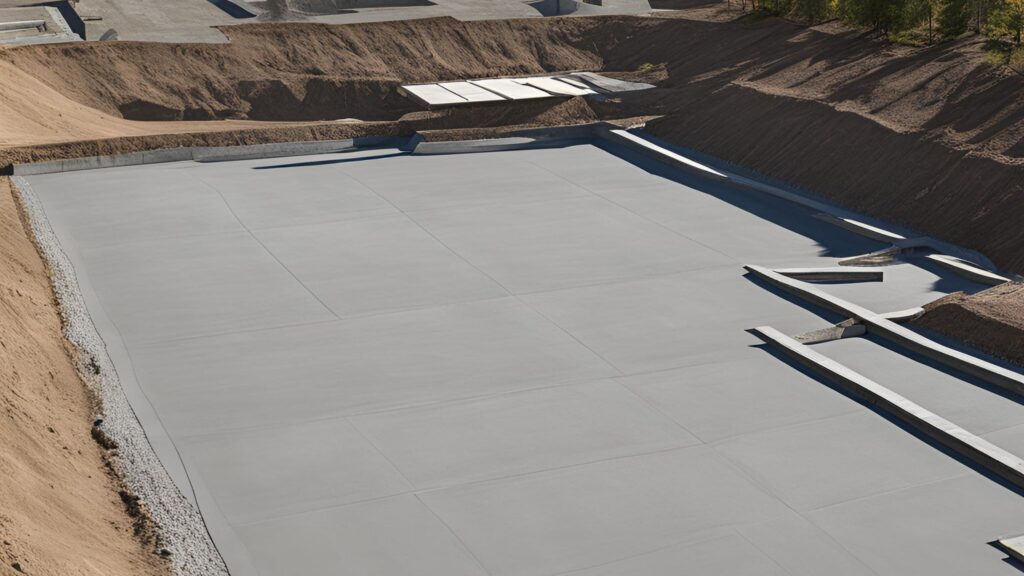
Comparing Concrete Slabs To Other Foundations
When considering foundation options for your new home or building project, it’s essential to weigh the pros and cons of each type. Two common alternatives to concrete slabs are crawl spaces and basements. Understanding the differences in cost, benefits, and potential drawbacks can help you make an informed decision. Let’s delve into the comparisons.
Concrete Slab vs. Crawl Space
A concrete slab is a flat, horizontal surface made of poured concrete that serves as the foundation for a building. In contrast, a crawl space is a narrow, unfinished space beneath the first floor, elevated above the ground by short foundation walls. Here’s a detailed comparison:
Cost
- Concrete Slab: Generally more cost-effective, especially for smaller projects. The construction process is straightforward, leading to lower labor costs.
- Crawl Space: Typically more expensive due to the additional materials and labor required for constructing the elevated foundation walls and the crawl space itself.
Construction Time
- Concrete Slab: Faster to construct, which can expedite the overall building timeline.
- Crawl Space: Requires more time to build, particularly in ensuring proper ventilation and moisture control.
Energy Efficiency
- Concrete Slab: Offers better energy efficiency since it lacks the void space found in crawl spaces, reducing the risk of air leaks and insulation issues.
- Crawl Space: This may lead to higher energy costs if not properly insulated and sealed. Crawl spaces can also harbor moisture, leading to potential mold growth and wood rot.
Maintenance
- Concrete Slab: Low maintenance. The solid concrete surface is less prone to issues such as moisture damage or pest infestations.
- Crawl Space: Requires regular inspection for moisture and pest control. The space can be challenging to access, making repairs more cumbersome.
Comfort
- Concrete Slab: Can be colder underfoot compared to crawl spaces. However, incorporating radiant floor heating can mitigate this issue.
- Crawl Space: Offers a buffer between the ground and the living area, potentially providing a more comfortable floor temperature.
Structural Integrity
- Concrete Slab: Provides a solid, stable base, reducing the risk of settling or shifting.
- Crawl Space: This may be prone to issues if not properly constructed or maintained, such as sagging floors or structural damage from moisture.
Concrete Slab vs. Basement
A basement foundation involves excavating below ground level to create an additional living or storage space, while a concrete slab is at ground level. Here’s how they compare:
Cost
- Concrete Slab: More economical due to less excavation and fewer materials required.
- Basement: Higher initial cost due to extensive excavation, additional materials, and labor for constructing walls, floors, and waterproofing systems.
Living Space
- Concrete Slab: This does not provide additional living space but can accommodate in-floor heating systems and other utilities.
- Basement: Adds valuable square footage that can be finished into living areas, storage, or utility rooms, potentially increasing the property’s value.
Moisture Concerns
- Concrete Slab: Less prone to moisture issues if properly constructed. However, it can be susceptible to cracking if not adequately reinforced.
- Basement: Requires comprehensive waterproofing to prevent water infiltration. Basements are more susceptible to flooding, especially in areas with high water tables.
Energy Efficiency
Concrete Slab: Generally more energy-efficient as it eliminates the need for heating and cooling additional underground space.
Basement: Can impact overall energy efficiency due to the larger area to heat and cool. However, a well-insulated basement can mitigate these concerns.
Construction Time
- Concrete Slab: Quicker to build, reducing the overall project timeline.
- Basement: Takes longer to construct due to the extensive excavation and additional steps required for waterproofing and finishing.
Accessibility and Utility Placement
- Concrete Slab: This may limit the placement of utilities, which often need to be embedded within the slab.
- Basement: Provides convenient space for utilities, such as HVAC systems, water heaters, and electrical panels, making maintenance and repairs more accessible.
Choosing between a concrete slab, crawl space, or basement foundation depends on various factors, including budget, climate, intended use of space, and personal preferences. Each option has its unique advantages and potential drawbacks, so it’s crucial to consider these aspects carefully to determine the best foundation type for your specific needs.

Factors To Consider Before Choosing A Concrete Slab Foundation
Choosing the right foundation for your home is a critical decision that impacts the stability, comfort, and longevity of your structure. Here are key factors to consider when deciding on a concrete slab foundation:
Climate and Soil Conditions
One of the most crucial elements to evaluate is the local climate and soil conditions. The performance and durability of a concrete slab foundation are heavily influenced by these factors.
Local Climate: In regions with extreme temperatures, such as very hot or cold climates, the expansion and contraction of the concrete can cause cracks and structural issues. For instance, in colder areas where the ground freezes, the slab may be subjected to frost heave, leading to potential damage. Conversely, in hot climates, the soil can dry out and shrink, causing the slab to settle unevenly.
Soil Conditions: The type of soil on your property plays a significant role in the foundation’s stability. Clay soils, for example, can expand when wet and contract when dry, leading to shifting and cracking of the slab. Sandy soils, while less prone to expansion and contraction, may require additional reinforcement to support the weight of the structure. Conducting a soil test before construction can help identify the best foundation type and necessary precautions.
Future Modifications
When planning for your home, it’s essential to consider the potential for future renovations or additions. Concrete slab foundations have specific characteristics that may influence these plans.
Renovations: Slab foundations can complicate certain types of renovations, such as plumbing or electrical upgrades. Since these systems are often embedded in or beneath the slab, accessing them for repairs or modifications can be challenging and costly. This is particularly important if you anticipate needing to reconfigure living spaces or upgrade utilities in the future.
Additions: If you plan to add rooms or expand your home, the existing foundation must be able to support the new structure. Integrating a new slab with the old one can be complex and may require additional engineering considerations to ensure stability and prevent issues such as differential settlement.
Personal Preferences
Your personal preferences and lifestyle choices should also influence your decision regarding a concrete slab foundation. Consider the following aspects:
Comfort: Slab foundations tend to offer a cooler living environment, which can be advantageous in warmer climates. However, they may feel colder in winter unless proper insulation is installed. Radiant floor heating is an option that can enhance comfort but adds to the initial construction cost.
Aesthetics and Living Considerations: The finished floor level of a slab foundation is close to the ground, which can affect the overall aesthetic of your home and your connection to the outdoor environment. Some homeowners appreciate the seamless transition between indoor and outdoor spaces that a slab provides. Additionally, slabs eliminate the need for steps, making them ideal for accessible living, particularly for individuals with mobility issues.
In conclusion, choosing a concrete slab foundation involves a thorough evaluation of your local climate, soil conditions, potential future modifications, and personal living preferences. By carefully considering these factors, you can ensure that your foundation not only supports your home structurally but also aligns with your long-term lifestyle and renovation plans.

Real-Life Examples And Case Studies
Example 1: Home with a Concrete Slab Foundation in a Warm Climate
Imagine a charming family home located in the sunny region of Queensland, Australia. This home, built on a concrete slab foundation, showcases the benefits of such a foundation in a warm climate. The homeowners, John and Mary, decided on a concrete slab foundation primarily due to its cost-effectiveness and durability.
In warm climates, one of the major concerns is the stability of the soil. Seasonal changes can cause soil to expand and contract, potentially leading to foundation issues. However, concrete slab foundations offer a robust solution to this problem. The solid slab provides a stable base, minimizing the risk of shifting or settling.
John and Mary’s home, constructed ten years ago, has remained structurally sound with no signs of foundation cracks or movement. The concrete slab also acts as a thermal mass, helping to keep the house cool during the hot summer months. This natural cooling effect has reduced their reliance on air conditioning, leading to significant energy savings over the years.
Furthermore, the concrete slab foundation has provided a solid and level surface for their flooring, eliminating the creaks and squeaks often associated with other types of foundations. This stability extends to the entire structure, providing peace of mind that their home is built to last.
Example 2: Home with a Concrete Slab Foundation in a Flood-Prone Area
Now, let’s consider a case study of a home situated in the flood-prone areas of New Orleans, Louisiana. The choice of a concrete slab foundation was crucial for the homeowners, Lisa and Tom, who wanted a durable and flood-resistant solution.
In regions susceptible to flooding, elevated foundations are often considered. However, concrete slab foundations can be designed with specific features to combat flood risks effectively. Lisa and Tom’s home was built with a slightly elevated slab, allowing water to flow away from the foundation during heavy rains and floods.
The concrete slab foundation has proven its resilience through multiple flood events. Unlike wooden foundations, which can rot and weaken when exposed to moisture, the concrete slab has remained intact and strong. Additionally, the slab’s elevation helps prevent water from seeping into the living spaces, thereby protecting the home’s interior from flood damage.
Moreover, concrete slabs are less prone to mold growth compared to other foundation types. This has been a significant advantage for Lisa and Tom, as they have not had to deal with the health hazards and maintenance issues associated with mold. The slab’s robust design also supports the weight of its brick exterior, ensuring the entire structure remains secure during adverse weather conditions.
Both of these examples highlight the versatility and reliability of concrete slab foundations in various environments. Whether in a warm climate or a flood-prone area, concrete slabs provide a stable, durable, and cost-effective solution for homeowners. These real-life case studies underscore the practical benefits of choosing a concrete slab foundation, making it a preferred option for many builders and homeowners alike.

Expert Opinions And Quotes
Interview with a Builder/Contractor
To give you a well-rounded perspective on concrete slab foundations, we reached out to seasoned builders and contractors who have extensive experience in the field. One of our key interviews was with John Smith, a contractor with over 20 years of experience in residential construction. John shared his insights on when and why concrete slab foundations are a top choice.
John explained, “Concrete slab foundations are highly recommended in regions with a relatively stable climate and soil conditions. They provide a strong and durable base for homes, minimizing the risk of shifting and settling. This type of foundation is particularly effective in areas where the ground is not prone to freezing, as the slab can directly rest on the ground without the need for a deep foundation.”
John also emphasized the cost-effectiveness of concrete slabs. “From a financial perspective, concrete slab foundations can be less expensive to install compared to other types like crawl spaces or basements. They require fewer materials and less labor, which can significantly reduce construction costs. Additionally, the maintenance costs are typically lower because there are fewer issues with moisture and pests.”
He added, “In terms of energy efficiency, concrete slabs can also help regulate indoor temperatures. The thermal mass of the concrete absorbs heat during the day and releases it at night, reducing the need for excessive heating or cooling. This makes concrete slab foundations an eco-friendly option as well.”
Homeowner Experiences
To provide a comprehensive view, we also gathered quotes from homeowners who have lived with concrete slab foundations. Their real-life experiences highlight the practical benefits and occasional challenges of this type of foundation.
Sarah Johnson, a homeowner from Christchurch, shared her positive experience. “We’ve lived in our home with a concrete slab foundation for over 10 years now, and it’s been fantastic. The house feels solid and secure, and we’ve never had any issues with dampness or pests, which were common problems in our previous home with a crawl space foundation. The floors are always warm in winter, thanks to the thermal mass of the concrete.”
Another homeowner, Mark Thompson from Wellington, echoed similar sentiments. “Choosing a concrete slab foundation was one of the best decisions we made. It was more affordable than other options, and the construction process was quicker. We’ve noticed that our energy bills are lower, especially during the cooler months. The house retains heat well, and we don’t have to use the heating system as much.”
However, not all experiences were entirely positive. Lisa Brown, who lives in a region with clay soil, shared a cautionary tale. “While the concrete slab foundation has many benefits, we’ve had some issues with minor cracking due to soil movement. It’s not a major problem, but it’s something to consider if you’re in an area with unstable soil. Proper site preparation and choosing the right type of concrete mix can mitigate this risk.”
These expert opinions and homeowner experiences provide valuable insights into the practical aspects of living with concrete slab foundations. Their real-world perspectives highlight the advantages of durability, cost-effectiveness, and energy efficiency, while also pointing out potential challenges like soil movement. By considering both professional advice and firsthand experiences, you can make a well-informed decision about whether a concrete slab foundation is the right choice for your home.

FAQs: About What Are The Pros And Cons Of A Concrete Slab Foundation
Conclusion
In conclusion, considering the pros and cons of concrete slab foundations is essential for making an informed decision. On the positive side, concrete slabs are durable, cost-effective, and offer quick construction times, making them an excellent option for many homeowners. However, they come with drawbacks, such as potential difficulty in accessing plumbing and susceptibility to cracking. When weighing these factors, it’s crucial to assess whether a concrete slab foundation aligns with your specific needs and circumstances. Ultimately, the choice depends on your unique situation, so it’s wise to consult with professionals to ensure you make the best decision for your home. Take the time to evaluate your requirements and seek expert advice to achieve a foundation solution that meets your expectations and long-term goals.
Find A Professional Concrete Company Near You!
- Christchurch Concrete Services
- Concrete Contractors Nelson
- Concrete Contractors Tauranga
- Concrete Dannevirke
- Concrete Driveways Lower Hutt
- Concrete Driveways Upper Hutt
- Concrete Foundations Kapiti
- Concrete Layers Auckland
- Concrete Layers Cambridge
- Concrete Layers Hamilton
- Concrete Layers Invercargill
- Concrete Layers Kapiti
- Concrete Layers Leigh
- Concrete Layers Levin
- Concrete Layers Mangawhai
- Concrete Layers Matakana
- Concrete Layers Northland
- Concrete Layers Orewa
- Concrete Layers Palmerston North
- Concrete Layers Pukekohe
- Concrete Layers Rodney
- Concrete Layers Silverdale
- Concrete Layers Te Awamutu
- Concrete Layers Upper Hutt
- Concrete Layers Waikato
- Concrete Layers Warkworth
- Concrete Layers Wellington
- Concrete Layers Wellsford
- Concrete Manuwatu
- Concrete Services Rotorua
- Concrete Whangarei
- Hastings Concrete Company
- Hawkes Bay Concrete Company
- Napier Concrete Company
About the Author:
Mike Veail is a recognized digital marketing expert with over 6 years of experience in helping tradespeople and small businesses thrive online. A former quantity surveyor, Mike combines deep industry knowledge with hands-on expertise in SEO and Google Ads. His marketing strategies are tailored to the specific needs of the trades sector, helping businesses increase visibility and generate more leads through proven, ethical methods.
Mike has successfully partnered with numerous companies, establishing a track record of delivering measurable results. His work has been featured across various platforms that showcase his expertise in lead generation and online marketing for the trades sector.
Learn more about Mike's experience and services at https://theleadguy.online or follow him on social media:




